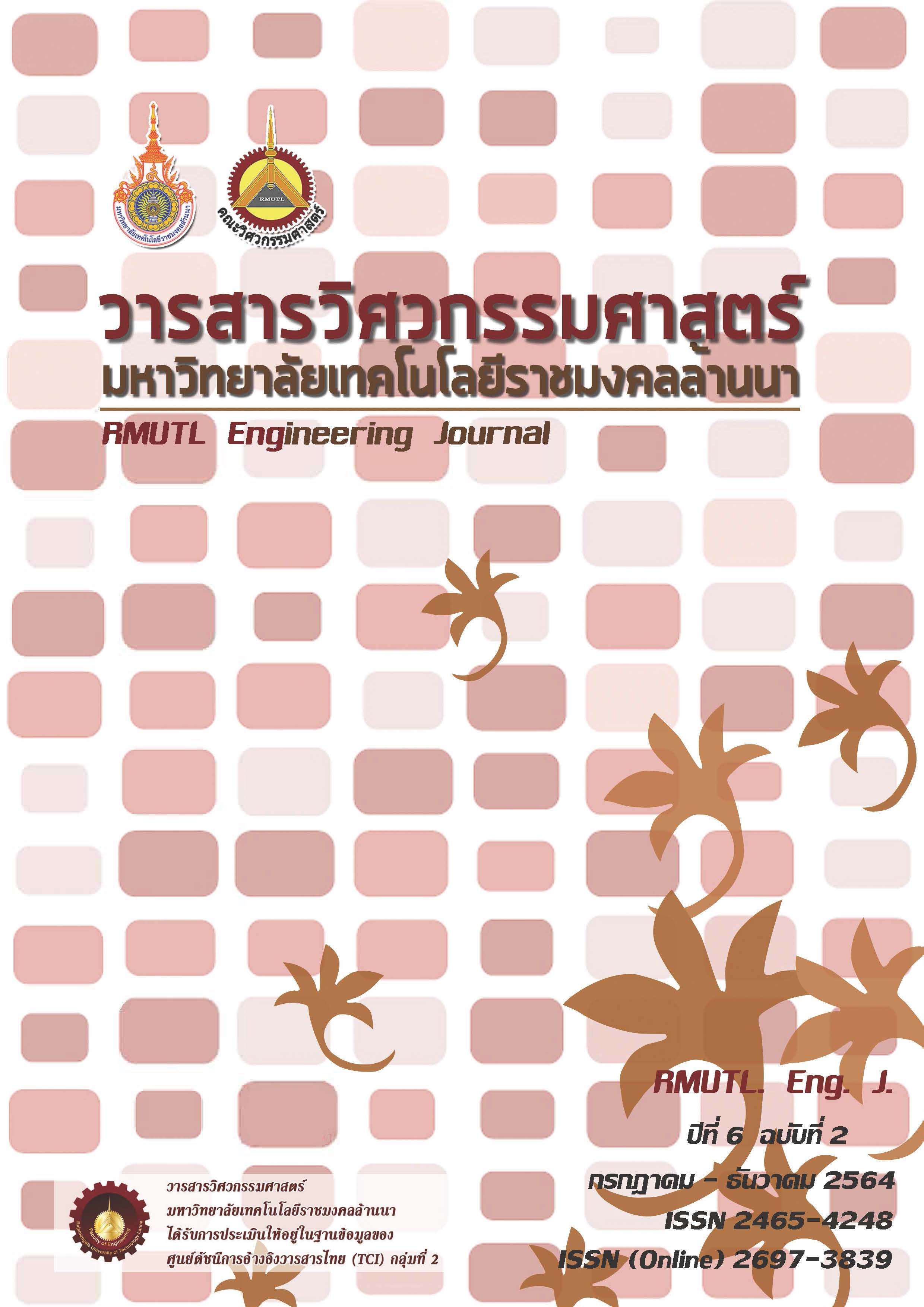Surface Roughness Prediction in Boring Turning of Ductile Cast Iron Using Response Surface Methodology and Tool Wear
DOI:
https://doi.org/10.14456/rmutlengj.2021.6Keywords:
Ductile Cast Iron, Surface Roughness, Response Surface Methodology, Box-Behnken DesignAbstract
The research aims to study the surface roughness prediction in turning of ductile cast iron using response surface methodology with experiment design of Box-Behnken design. Factors used in the experiment include speed, feed rate, depth of cut, and corner radius using ductile cast iron FCD 400. From the experiment, factors affecting the surface roughness are speed, corner radius, feed rate, and depth of cut. The surface roughness tended to decrease when the feed rate and depth of cut were decreased and increasing the speed corner radius up. The optimal conditions on the surface roughness were the speed of 1,700 rpm, feed rate of 0.04 mm/rev, depth of cut 0.1 mm, and corner radius of 1.2 mm. These conditions resulted in the surface roughness of 0.2589 µm. From boring turning to study the wear characteristics of the insert, it was found that the fracture wears at the cutting edge due to the fraction and impact on the workpiece
References
[2] Badadhe AM, Bhave SY, Navale LG. Optimization of cutting parameters in boring operation. IOSR Journal of Mechanical and Civil Engineering. ISSN (e): 2278-1684, ISSN, 2013; p. 10-5.
[3] Kumar P, Oberoi JS, Singh C, Dhiman H. (2014). Analysis and optimization of parameters affecting Surface roughness in boring process. International Journal of Advanced Mechanical Engineering. 2014; 4(6): p. 647-55.
[4] Vaishnav MP, Sonawane, SA. Analysis and optimization of boring process parameters by using taguchi Method on SAE 1541. International Journal of Engineering Science Invention. 2014; 3(8): p. 59-63.
[5] Patil RS, Jadhav SM. Boring parameters optimization for minimum surface roughness using CNC boring machine with passive damping material.In2017 2nd International Conference for Convergence in Technology; (I2CT) 2017 Apr 7 (pp. 300-303). IEEE.
[6] Chutima P. Engineering experiment design. Bangkok: Chulalongkorn University Press; 2002. Thai.
[7] Montgomery DC. Design and Analysis of Experiments. 7th edition. New York: John Wiley & Sons Inc; 2012.
[8] Sudasna-na-ayudthya P, Luangpaiboon P. Design and Analysis of Experiments. Bangkok: Top Publishing; 2008. Thai.
[9] Rawangwong S, Burapa R, Rodjananugoon J. Prediction of Surface Roughness in Turning of Aluminum Casting Semi-Solid 7075 Using Response Surface Methodology. Proceedings of the 13th Eco-Energy and Materials Science and Engineering Symposium, 2016 December 1-4, Udonthani, Thailand; 2016, p. 450-9. Thai.
[10] Yuvarajua BA, Nandaa BK. Prediction of vibration amplitude and surface roughness in boring operation by response surface methodology. Materials today: Proceedings. 2018 Jan 1; 5(2):6906-15.
[11] Boonrawd W, Ratanawilai T. Effect of turning parameters on surface roughness of aluminum casting semi-Solid. Research and Development Jounal. 2012; 23(4): p. 71-7. Thai.
[12]Beauchamp Y, Thomas M, Youssef YA, Masounave J. Investigation of cutting parameter effects on surface roughness in lathe boring operation by use of a full factorial design.Computer _Industrial Engineering. 1996 Dec 1;31(3-4):645-51.
[13] Ruksorn P, Deepradit S. (2017). The prediction of surface roughness in the S45C turning process by using response surface design. Thai Journal of Operations Research. 2017;
7(2): p. 13-9. Thai.
[14] Chanphong S. Prediction of surface roughness for steel in CNC turing by response surface method. M.Eng. thesis.Chulalongkorn University Bangkok; 2011










